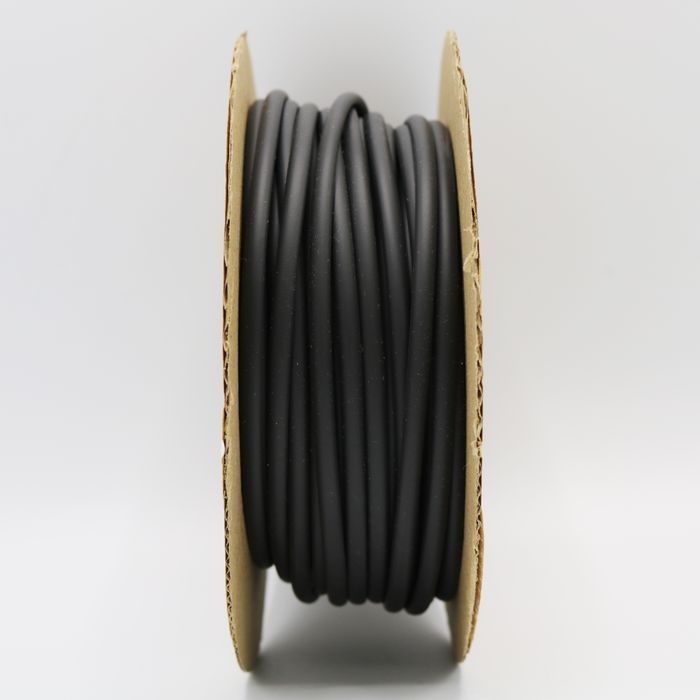- Home
- Heat Shrink & Non-Shrink Tubing
- Adhesive Lined Heat Shrink (Dual Wall)
- 4:1 Adhesive Lined Heat Shrink
4:1 Adhesive Lined Heat Shrink

4:1 Adhesive Lined Heat Shrink
Our dual wall polyolefin heat shrink tubing contains an inner adhesive layer that melts just below the shrink temperature of the outer layer, meaning that it creates a watertight adhesion seal between the outside and the cables inside.
It's frequently used for insulation, wire identification, wire bundling, mechanical protection, color coding, lightweight harnessing, physical/electrical protection of components, strain relief, and solder insulation. It shrinks at 100°C and has an operating temperature of -55°C to +135°C. Its maximum continuous use temperature 135°C.
It's available in initial diameters from 3/16" to 2", and you can buy it in 656 foot spools, four foot pieces, or pre-cut pieces. Polyolefin is part of the family of polymer plastics and they have a wide range of properties because of how they are formed. They can be either synthetic or natural and are made up of large molecules that are constructed from smaller, repeating units.
The polymers get their properties from these "chains," and those properties can vary widely: Rubber, shellac, amber, silk, and wool are all polymers, and all very different.
A: As noted, its melting point is just below the shrink point of the outer layer of tubing, so it essentially de-solidifies and then liquifies, exactly like hot glue.
At the same time, the outer layer is shrinking to one-fourth its original diameter, which squeezes the adhesive into place. Once the heat is removed and everything cools down, the adhesive is bonded to both sides.
A: No, it's available in other heat shrink ratios. These include 3:1 in thin-, medium-, and heavy-walled varieties, as well as 2:1 and 6:1.
Category
-
Heat Shrink & Non-Shrink Tubing
- General Purpose (Single Wall)
- Adhesive Lined Heat Shrink (Dual Wall)
- 3:1 Thin Wall Adhesive Lined (7 Colors)
- 4:1 Adhesive Lined Heat Shrink
- 3:1 Heavy Wall Adhesive Lined Heat Shrink
- 3:1 Medium Wall Adhesive lined heat shrink
- 2:1 Adhesive Lined Heat Shrink
- High ratio (6:1) heat shrink tubing
- Cable TV Adhesive Lined Heat Shrink
- Heat Shrink End Caps
- Heat Shrink Tape
- 3:1 Semi Rigid Adhesive Lined
- High Temperature and Chemical Resistant
- Heat Shrink Kits and End Caps
- Ultra Thin Wall and Low Shrink Temperature (80C)
- Heat Shrink Printing
- Butt Splice Connectors and Electrical Terminals
- Heat Shrink Bands
- EMI/RFI Shielding Heat Shrink
- Non-Shrink Plastic Tubing
- Dunbar Heat Shrink
- 3M™ Heat Shrink Tubing
- Canusa
- Overstock Heat Shrink
- Braided Sleeving
- Cable Ties
- Label Makers & Heat Shrink Printers
- Heat Guns & Tubing Cutters
- Resource Center
- Shop By Industry
- Shop By Brand